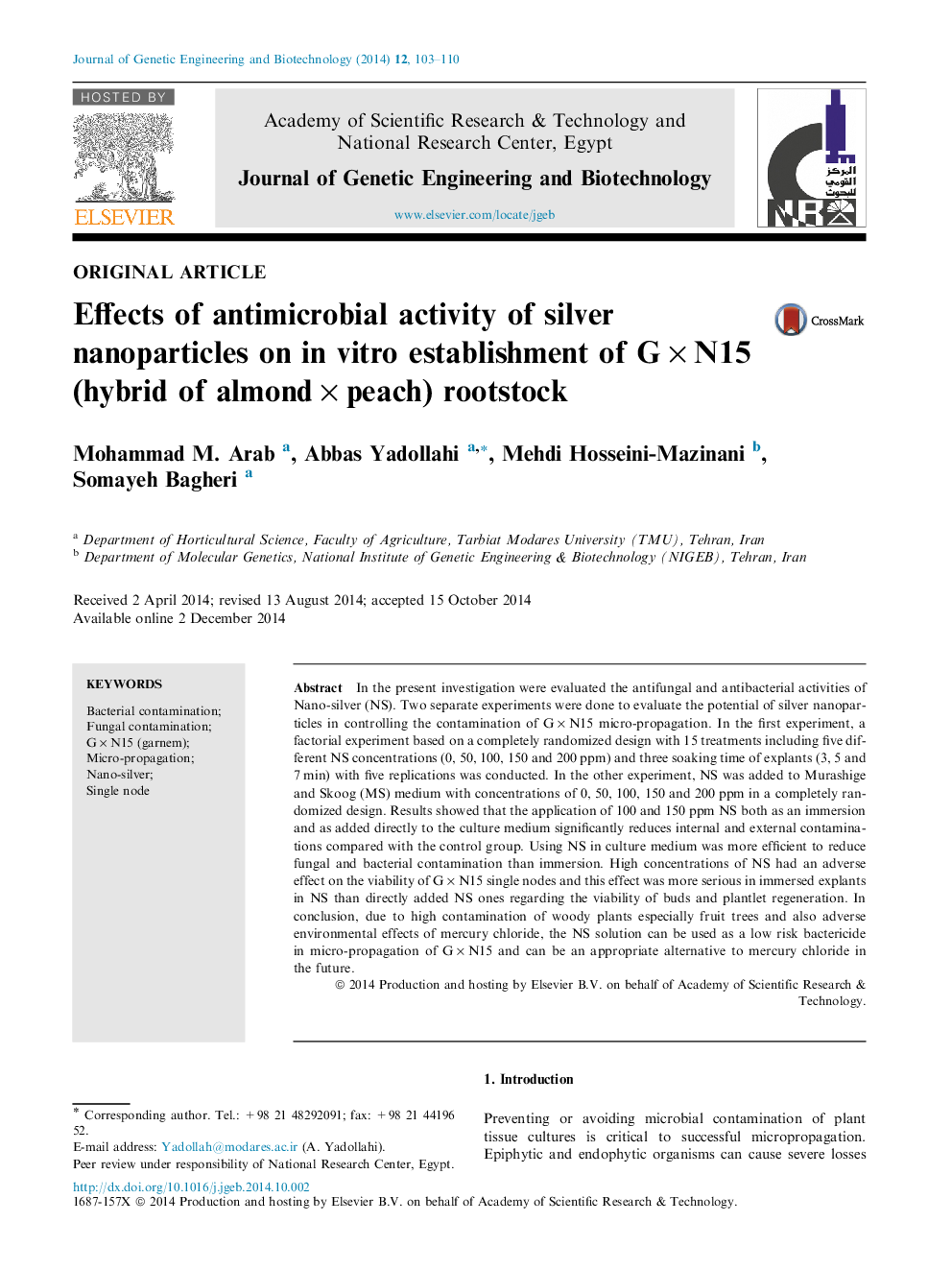| Article ID | Journal | Published Year | Pages | File Type |
|---|---|---|---|---|
| 2087893 | Journal of Genetic Engineering and Biotechnology | 2014 | 8 Pages |
In the present investigation were evaluated the antifungal and antibacterial activities of Nano-silver (NS). Two separate experiments were done to evaluate the potential of silver nanoparticles in controlling the contamination of G × N15 micro-propagation. In the first experiment, a factorial experiment based on a completely randomized design with 15 treatments including five different NS concentrations (0, 50, 100, 150 and 200 ppm) and three soaking time of explants (3, 5 and 7 min) with five replications was conducted. In the other experiment, NS was added to Murashige and Skoog (MS) medium with concentrations of 0, 50, 100, 150 and 200 ppm in a completely randomized design. Results showed that the application of 100 and 150 ppm NS both as an immersion and as added directly to the culture medium significantly reduces internal and external contaminations compared with the control group. Using NS in culture medium was more efficient to reduce fungal and bacterial contamination than immersion. High concentrations of NS had an adverse effect on the viability of G × N15 single nodes and this effect was more serious in immersed explants in NS than directly added NS ones regarding the viability of buds and plantlet regeneration. In conclusion, due to high contamination of woody plants especially fruit trees and also adverse environmental effects of mercury chloride, the NS solution can be used as a low risk bactericide in micro-propagation of G × N15 and can be an appropriate alternative to mercury chloride in the future.
